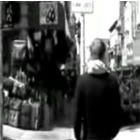Bay Area Rapid Transit?
In hearing that BART raised its prices, I intended to check to see what was going on, but instead got sidetracked by this:
Hahaha, get it? Bay Area Rapid Transit...
Kk, so anyway, BART did raise it's fees slightly at least for the most part. At the same time, it also increased train frequency, lengthened lines that stopped at Daly City, and made some time changes.
Following is the complete low down, so that you don't get shortchanged next time you need to use the real BART:
New year brings more trains more often; 33% increase in service, faster commutes, better SFO/Millbrae service and modest fare adjustment.
The new year has brought new and improved BART schedule with more trains, more often - especially at night, on weekends and along the San Francisco International Airport (SFO)/Millbrae extension. To see how the changes affected your trip, use the BART QuickPlanner, download a mobile BART QuickPlanner for your Apple iPod, Palm or Pocket PC device or check schedules by line or station.
Starting January 1, 2008, BART began providing enhanced service including:
* More trains, more often after 7 p.m. Monday-Saturday and all day Sunday
* Double the trains to most stations on the San Francisco International Airport (SFO)/Millbrae extension
* Faster commutes times and direct service from Millbrae to downtown San Francisco
* Earlier start time for train service to SFO
33% SERVICE INCREASE MEANS MORE TRAINS, MORE OFTEN
The schedule change means more frequent service after 7 p.m. Monday through Saturday and all the time on Sunday. During this time period trains run every 15 minutes instead of every 20 minutes.
FASTER, MORE FREQUENT SERVICE ON SFO AND MILLBRAE LINES
Also with the new schedule, the popular Pittsburg/Bay Point (Yellow) line began serving SFO at all times and the Richmond (Red) line now goes directly into Millbrae Station. This means that commuters going from Millbrae to downtown San Francisco see a six-minute (16%) drop in their travel time.
MONDAY - FRIDAY 4 AM TO 7 PM:
* Pittsburg/Bay Point (Yellow) line goes directly to SFO instead of Dublin/Pleasanton (Blue) line
* Richmond (Red) line goes directly to Millbrae
MONDAY - FRIDAY AFTER 7 PM, WEEKENDS AND HOLIDAYS:
* Pittsburg/Bay Point (Yellow) line goes directly to SFO instead of Dublin/Pleasanton (Blue) line
* Dublin/Pleasanton (Blue) line replaces the Richmond (Red) line and goes directly to Millbrae
The two lines combined provide San Bruno, South San Francisco and Colma commuters with double the number of trains - so there will be a train every 8-10 minutes compared to the old schedule, which had waits of up to 20 minutes.
OTHER ENHANCEMENTS/CHANGES:
* New train to SFO Station from downtown San Francisco for those catching early morning flights on weekdays. The train
arrives approximately 16 minutes earlier than the previous scheduled arrival
* Richmond or Red Line starts one hour earlier (around 4 AM) with direct service to downtown San Francisco and Millbrae
* Direct service from Millbrae to SFO is eliminated, however during most times there will be a timed transfer to SFO at San Bruno
MODEST FARE ADJUSTMENT - BETWEEN 10 AND 30 CENTS
Starting January 1, 2008, the second in a series of four, CPI (Consumer Price Index) based fare adjustments also took effect.
But the modest, 5.4% increase still offers commuters a significant savings over driving especially when you consider gas prices have shot up a whopping 30% in California since BART last had a fare increase.
Most BART commuters are seeing between a 10- and 30-cent increase in fares, making the average fare $2.92 or 21 cents/mile. That's less than half the cost of driving a car, which the American Automobile Association puts at 52 cents/mile. Since BART fares are distance-based, the fares on the shortest trips have gone from $1.40 to $1.50. The longest commute trip, between Pittsburg/Bay Point and Millbrae, has gone from $6.30 to $6.60.
In May 2003, the BART Board of Directors approved raising fares every other year based on the average of inflation over the course of two years minus 0.5% to force BART to find cost savings instead of relying on inflationary revenue increases.





















0 Responses to Bay Area Rapid Transit?
Post a Comment